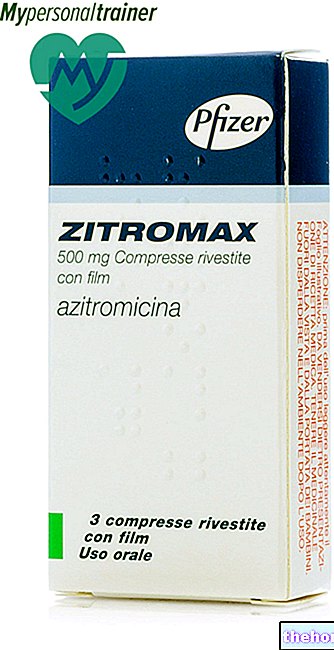Active ingredients: Flurazepam (flurazepam monohydrochloride)
Flunox® 15 mg hard capsules
Flunox® 30 mg hard capsules
Indications Why is Flunox used? What is it for?
Pharmacotherapeutic group
Hypnotic, sedative.
Indications
Short-term treatment of insomnia.
Benzodiazepines are only indicated when the disorder is severe, disabling, or makes the subject very uncomfortable.
Contraindications When Flunox should not be used
Myasthenia gravis. Hypersensitivity to benzodiazepines.
Known hypersensitivity to flurazepam or to any of the excipients.
Severe respiratory insufficiency.
Severe hepatic insufficiency.
Sleep apnea syndrome.
Precautions for use What you need to know before taking Flunox
Tolerance - Some loss of efficacy to the hypnotic effects of benzodiazepines may develop after repeated use for a few weeks.
Dependence - The use of benzodiazepines can lead to the development of physical and psychological dependence on these drugs. The risk of dependence increases with dose and duration of treatment; it is greater in patients with a history of drug or alcohol abuse. once physical dependence has developed, abrupt termination of treatment will be accompanied by withdrawal symptoms.
These can consist of headache, body aches, extreme anxiety, tension, restlessness, confusion and irritability. In severe cases the following symptoms may occur: derealization, depersonalization, hyperacusis, numbness and tingling of the extremities, hypersensitivity to light, noise and physical contact, hallucinations or seizures. Rebound insomnia and anxiety: A transient syndrome in which symptoms leading to treatment with benzodiazepines recur in an aggravated form may occur on discontinuation of treatment. It may be accompanied by other reactions, including mood changes, anxiety, restlessness or disturbances As the risk of withdrawal or rebound symptoms is greater after abrupt discontinuation of treatment, a gradual decrease in dosage is suggested.
Duration of treatment - The duration of treatment should be as short as possible (see posology) depending on the indication: in the case of insomnia, it should not exceed four weeks, including a gradual withdrawal period. Extension of therapy beyond these periods should not occur without re-evaluation of the clinical situation.
It may be helpful to inform the patient when treatment is started that it will be of limited duration and to explain precisely how the dosage should be progressively decreased.
It is also important that the patient is informed of the possibility of rebound phenomena, thus minimizing the anxiety about these symptoms should they occur upon discontinuation of the drug. There are elements to predict that, in the case of benzodiazepines with a short duration of action, withdrawal symptoms may become manifest within the dosing interval between doses, particularly for high doses. When using benzodiazepines with a long duration of action, it is important to warn the patient that abrupt change to a benzodiazepine with a short duration of action is not recommended, as withdrawal symptoms may occur.
Amnesia - Benzodiazepines can induce anterograde amnesia. This occurs most often several hours after ingestion of the drug and, therefore, to reduce the risk it should be ensured that patients can have 7-8 hours of uninterrupted sleep (see side effects).
Psychiatric and paradoxical reactions - Reactions such as restlessness, agitation, irritability, aggression, disappointment, anger, nightmares, hallucinations, psychosis, behavioral changes are known to occur when benzodiazepines are used.
Should this occur, the use of the medicinal product should be discontinued. These reactions are more frequent in children and the elderly.
Specific Patient Groups - Benzodiazepines should not be given to children without careful consideration of the actual need for treatment; the duration of treatment should be as short as possible. Elderly people should take a reduced dose (see posology).
Likewise, a lower dose is suggested for patients with chronic respiratory failure due to the risk of respiratory depression. Benzodiazepines are not indicated in patients with severe hepatic insufficiency as they can precipitate encephalopathy. Benzodiazepines are not recommended for the primary treatment of psychotic illness. Benzodiazepines should not be used alone to treat depression or anxiety associated with psychotic illness. depression (suicide can be precipitated in such patients). Benzodiazepines should be used with extreme caution in patients with a history of drug or alcohol abuse.
Interactions Which drugs or foods can modify the effect of Flunox
Concomitant intake with alcohol should be avoided. The sedative effect may be enhanced when the medicinal product is taken in conjunction with alcohol. This adversely affects the ability to drive or use machines. Association with CNS depressants: the central depressive effect may be enhanced in cases of concomitant use with antipsychotics (neuroleptics), hypnotics, anxiolytics / sedatives, antidepressants, narcotic analgesics, antiepileptics, anesthetics and sedative antihistamines. increase in euphoria leading to an increase in psychic dependence. Compounds that inhibit certain liver enzymes (especially cytochrome P450) may increase the activity of benzodiazepines. To a lesser extent, this also applies to benzodiazepines which are metabolized only by conjugation.
Warnings It is important to know that:
Use in pregnancy and lactation
Do not administer the drug in the first trimester of pregnancy. In the following period, the drug should be administered only in case of real need and under the direct supervision of the doctor. The woman should contact her doctor, both if she intends to become pregnant, and if she suspects she is pregnant, regarding the discontinuation of the medicine; if, for serious medical reasons, the product is administered during the last period of pregnancy, or during labor at high doses, effects on the newborn may occur such as hypothermia, hypotonia and moderate respiratory depression due to the pharmacological action of the drug. Additionally, infants born to mothers who have taken benzodiazepines chronically during late pregnancy may develop physical dependence and may be at some risk for developing withdrawal symptoms in the postnatal period.
Since benzodiazepines are excreted in breast milk, they should not be given to breastfeeding mothers.
Special warnings - Sedation, amnesia, impaired concentration and muscle function can adversely affect the ability to drive and use machines. If sleep duration has been insufficient, the likelihood of impaired alertness may be increased (see interactions).
Flunox contains lactose: in case of ascertained intolerance to sugars, contact your doctor before taking the medicine.
Dosage and method of use How to use Flunox: Dosage
The usual adult dose is 1 capsule of 15 mg in the evening before bedtime.
In stubborn cases, start with 1 capsule of 30 mg and, when possible, continue with the lower dose. In the treatment of elderly patients, the posology must be carefully established by the physician, who will have to evaluate a possible reduction of the dosages indicated above. Treatment should be as short as possible. The duration of treatment generally varies from a few days to two weeks, up to to a maximum of four weeks, including a gradual withdrawal period.
In certain cases, extension beyond the maximum treatment period may be necessary; if so, it should not take place without reassessment of the patient's condition. Treatment should be started with the lowest recommended dose. The maximum dose should not be exceeded. .
Overdose What to do if you have taken too much Flunox
There are currently no reported cases of overdose with flurazepam. In case of improper or accidental use, apply supportive and symptomatic treatments. As with other benzodiazepines, an overdose should not be life-threatening unless concomitant other CNS depressants (including alcohol) are taken. In the treatment of overdose of any drug, consideration should be given to possibility that other substances were taken at the same time. Following an overdose of benzodiazepines for oral use, vomiting should be induced (within one "hour) if the patient is conscious or gastric lavage with respiratory protection undertaken if the patient is unconscious. improvement with stomach emptying, activated charcoal should be given to reduce absorption.Special attention should be paid to respiratory and cardiovascular functions in emergency therapy. Benzodiazepine overdose usually results in varying degrees of central nervous system depression ranging from clouding to coma. In mild cases, symptoms include drowsiness, mental confusion and lethargy. In severe cases, symptoms may include ataxia, hypotonia, hypotension, respiratory depression, rarely coma and very rarely death. "Flumazenil" may be useful as an antidote.
Side Effects What are the side effects of Flunox
At therapeutic doses, Flunox is usually well tolerated. If the dosage is not adapted to individual needs, however, certain side effects may appear, particularly in elderly or debilitated patients, linked to excessive sedation such as: drowsiness during the day, dulling of emotions, reduced alertness, confusion, fatigue, headache, dizziness, decreased muscle tone, ataxia, double vision. These phenomena occur mainly at the beginning of therapy and usually disappear with subsequent administrations. More rarely, with the use of benzodiazepines, other adverse reactions may occasionally be observed including: nausea, vomiting, gastrointestinal disturbances, changes in libido, palpitations, skin rashes.
Amnesia - Anterograde amnesia can also occur at therapeutic dosages, the risk increases at higher dosages. Amnesic effects may be associated with behavioral changes (see special warnings and precautions for use).
Depression - During the use of benzodiazepines a pre-existing depressive state can be unmasked. Benzodiazepines or benziodiazepine-like compounds can cause reactions such as: restlessness, agitation, irritability, aggression, disappointment, anger, nightmares, hallucinations, psychosis, behavioral changes. they can be quite severe and are more likely in children and the elderly.
Dependence - The use of benzodiazepines (even at therapeutic doses) can lead to the development of physical dependence: discontinuation of therapy can cause rebound or withdrawal phenomena (see special warnings and precautions for use). Psychic dependence can occur. Abuse of benzodiazepines has been reported.
It is advisable to consult your doctor or pharmacist in case of unwanted effects not mentioned in this leaflet.
Expiry and Retention
Store at a temperature not exceeding 25 ° C.
Warning: do not use the medicine after the expiry date indicated on the package.
MEDICINES SHOULD NOT BE KEPT WITHIN REACH OF CHILDREN
Deadline "> Other information
Composition
Flunox 15 mg hard capsules
1 capsule contains:
- Active ingredient: flurazepam monohydrochloride 15 mg.
- Excipients: corn starch, lactose, talc, anhydrous colloidal silica, magnesium stearate.
Flunox 30 mg hard capsules
1 capsule contains:
- Active ingredient: flurazepam monohydrochloride 30 mg.
- Excipients: corn starch, lactose, talc, anhydrous colloidal silica, magnesium stearate.
Capsule components:
- Flunox 15 mg hard capsules: gelatin, red iron oxide, titanium dioxide, black iron oxide.
- Flunox 30 mg hard capsules: gelatin, red iron oxide, titanium dioxide.
Pharmaceutical Form and Content
Flunox 15 mg hard capsules for oral use: Box of 30 capsules.
Flunox 30 mg hard capsules for oral use: Box of 20 capsules.
Source Package Leaflet: AIFA (Italian Medicines Agency). Content published in January 2016. The information present may not be up-to-date.
To have access to the most up-to-date version, it is advisable to access the AIFA (Italian Medicines Agency) website. Disclaimer and useful information.
01.0 NAME OF THE MEDICINAL PRODUCT -
FLUNOX HARD CAPSULES
02.0 QUALITATIVE AND QUANTITATIVE COMPOSITION -
Flunox 15 mg hard capsules. Each capsule contains:
Active ingredient: flurazepam monohydrochloride 15 mg.
Flunox 30 mg hard capsules. Each capsule contains:
Active ingredient: flurazepam monohydrochloride 30 mg.
For excipients, see 6.1.
03.0 PHARMACEUTICAL FORM -
Hard capsules for oral use.
04.0 CLINICAL INFORMATION -
04.1 Therapeutic indications -
Short-term treatment of insomnia.
Benzodiazepines are only indicated when the disorder is severe, disabling or subjecting the subject to severe distress.
04.2 Posology and method of administration -
The usual adult dose is 1 capsule of 15 mg in the evening before bedtime. In stubborn cases, start with 1 capsule of 30 mg and, when possible, continue with the lower dose.
In the treatment of elderly patients, the posology must be carefully established by the doctor, who will have to evaluate a possible reduction of the dosages indicated above.
Treatment should be as short as possible. The duration of treatment generally ranges from a few days to two weeks, up to a maximum of four weeks, including a gradual withdrawal period.
In certain cases, extension beyond the maximum treatment period may be necessary; if so, it should not take place without reassessment of the patient's condition.
Treatment should be started with the lowest recommended dose. The maximum dose should not be exceeded.
04.3 Contraindications -
Myasthenia gravis. Hypersensitivity to benzodiazepines. Known hypersensitivity to flurazepam or to any of the excipients. Severe respiratory insufficiency. Severe hepatic insufficiency. Sleep apnea syndrome.
04.4 Special warnings and appropriate precautions for use -
Tolerance.
Some loss of efficacy to the hypnotic effects of benzodiazepines may develop after repeated use for a few weeks.
Dependence.
The use of benzodiazepines can lead to the development of physical and mental dependence on these drugs. The risk of addiction increases with dose and duration of treatment; it is greater in patients with a history of drug or alcohol abuse. Once the physical dependence has developed, the abrupt termination of treatment will be accompanied by withdrawal symptoms. These may consist of headache, body aches, extreme anxiety, tension, restlessness, confusion and irritability. In severe cases, the following may occur. symptoms: derealization, depersonalization, hyperacusis, numbness and tingling of the extremities, hypersensitivity to light, noise and physical contact, hallucinations or seizures. Insomnia and rebound anxiety: a transient syndrome in which the symptoms that led to treatment with benzodiazepines recur in an aggravated form. It may be accompanied by other reactions, including mood changes, anxiety, restlessness, or sleep disturbances. Since the risk of withdrawal or rebound symptoms is greater after abrupt discontinuation of treatment, a gradual decrease in dosage is suggested.
Duration of treatment.
The duration of treatment should be as short as possible (see posology) depending on the indication: in the case of insomnia, it should not exceed four weeks, including a gradual withdrawal period. Extending therapy beyond these periods should not occur without re-evaluation of the clinical situation. It may be helpful to inform the patient when treatment is started that it will be of limited duration and to explain precisely how the dosage should be progressively decreased.
Furthermore, it is important that the patient is informed of the possibility of rebound phenomena, thus minimizing the anxiety about these symptoms should they occur when the drug is discontinued.
There is evidence that, in the case of benzodiazepines with a short duration of action, withdrawal symptoms may become manifest within the dosing interval between doses, particularly for high doses.
When using benzodiazepines with a long duration of action, it is "important to warn the patient that abrupt change to a benzodiazepine with a short duration of action is not recommended, as withdrawal symptoms may occur."
Amnesia.
Benzodiazepines can induce anterograde amnesia. This occurs most often several hours after ingestion of the drug and, therefore, to reduce the risk it should be ensured that patients can have 7-8 hours of uninterrupted sleep (see side effects).
Psychiatric and paradoxical reactions.
When using benzodiazepines it is known that reactions such as restlessness, agitation, irritability, aggression, disappointment, anger, nightmares, hallucinations, psychosis, behavioral changes may occur. If this occurs, the use of the drug should be discontinued. Such reactions are more frequent in children and the elderly.
Specific groups of patients.
Benzodiazepines should not be given to children without careful consideration of the actual need for treatment; the duration of treatment should be as short as possible. The elderly should take a reduced dose (see posology). Likewise, a lower dose is suggested. for patients with chronic respiratory failure due to the risk of respiratory depression. Benzodiazepines are not indicated in patients with severe hepatic insufficiency as they can precipitate encephalopathy. Benzodiazepines are not recommended for the primary treatment of psychotic illness. Benzodiazepines should not be used alone to treat depression or anxiety associated with psychotic illness. depression (suicide can be precipitated in such patients). Benzodiazepines should be used with extreme caution in patients with a history of drug or alcohol abuse.
This medicine contains lactose: Patients with rare hereditary problems of galactose intolerance, the Lapp lactase deficiency, or glucose-galactose malabsorption should not take this medicine.
04.5 Interactions with other medicinal products and other forms of interaction -
Concomitant intake with alcohol should be avoided. The sedative effect may be enhanced when the drug is taken in conjunction with alcohol. This adversely affects the ability to drive or use machines. Association with CNS depressants: the central depressive effect it can be increased in cases of concomitant use with antipsychotics (neuroleptics), hypnotics, anxiolytics / sedatives, antidepressants, narcotic analgesics, antiepileptics, anesthetics and sedative antihistamines. In the case of narcotic analgesics, an increase in euphoria can occur, leading to an increase in psychic dependence.
Compounds that inhibit certain liver enzymes (especially cytochrome P450) may increase the activity of benzodiazepines. To a lesser extent, this also applies to benzodiazepines which are metabolized only by conjugation.
04.6 Pregnancy and breastfeeding -
Do not administer the drug in the first trimester of pregnancy. In the following period, the drug should be administered only in case of real need and under the direct supervision of the doctor.
The woman of childbearing age should contact her doctor, both if she intends to become pregnant, and if she suspects she is pregnant, regarding the suspension of the medicine; if, for serious medical reasons, the product is administered during the last period of pregnancy, or during labor at high doses, effects on the newborn may occur such as hypothermia, hypotonia and moderate respiratory depression due to the pharmacological action of the drug. Infants born to mothers who have taken benzodiazepines chronically during late pregnancy may develop physical dependence and may be at some risk for developing withdrawal symptoms in the postnatal period. Since benzodiazepines are excreted in breast milk, they should not be given to mothers who are breastfeeding.
04.7 Effects on ability to drive and use machines -
Sedation, amnesia, impaired concentration and muscle function can adversely affect the ability to drive and use machines. If sleep duration has been insufficient, the likelihood of impaired alertness may be increased (see interactions).
According to the mode of use, the dose and individual sensitivity, Flunox, like other drugs with hypnotic action, can affect the attention span: those who are engaged in driving vehicles or operating on machinery that require particular attention and vigilance.
04.8 Undesirable effects -
At therapeutic doses, Flunox is usually well tolerated.
If the dosage is not adapted to individual needs, however, certain side effects may appear, particularly in elderly or debilitated patients, linked to excessive sedation such as: drowsiness during the day, dulling of emotions, reduced alertness, confusion, fatigue, headache, dizziness, decreased muscle tone, ataxia, double vision. These phenomena occur mainly at the beginning of therapy and usually disappear with subsequent administrations. More rarely, with the use of benzodiazepines, other adverse reactions may occasionally be observed including: nausea, vomiting, gastrointestinal disturbances, changes in libido, palpitations, skin rashes.
Amnesia
Anterograde amnesia can also occur at therapeutic dosages, the risk increases at higher dosages. Amnesic effects may be associated with behavioral changes (see special warnings and precautions for use).
Depression
During the use of benzodiazepines a pre-existing depressive state can be unmasked. Benzodiazepines or benziodiazepine-like compounds can cause reactions such as: restlessness, agitation, irritability, aggression, disappointment, anger, nightmares, hallucinations, psychosis, behavioral changes.
Such reactions can be quite severe. They are more likely in children and the elderly.
Dependence
The use of benzodiazepines (even at therapeutic doses) can lead to the development of physical dependence: discontinuation of therapy can cause rebound or withdrawal phenomena (see special warnings and precautions for use). Psychic dependence can occur. Abuse of benzodiazepines has been reported.
04.9 Overdose -
There are currently no reported cases of overdose with flurazepam. In case of improper or accidental use, apply supportive and symptomatic treatments.
As with other benzodiazepines, an overdose should not be life-threatening unless concomitant other CNS depressants (including alcohol) are taken. In the treatment of overdose of any drug, consideration should be given to possibility that other substances were taken at the same time.
Following an overdose of oral benzodiazepines, vomiting should be induced (within one hour) if the patient is conscious or gastric lavage with respiratory protection undertaken if the patient is unconscious. improvement is seen with stomach emptying, activated charcoal should be given to reduce absorption. Special attention should be paid to respiratory and cardiovascular functions in emergency therapy. Overdosage of benzodiazepines usually results in varying degrees of central nervous system depression ranging from clouding to coma.
In mild cases, symptoms include drowsiness, mental confusion, and lethargy. In severe cases, symptoms may include ataxia, hypotonia, hypotension, respiratory depression, rarely coma, and very rarely death. "Flumazenil" can be useful as an antidote.
05.0 PHARMACOLOGICAL PROPERTIES -
05.1 "Pharmacodynamic properties -
Pharmacotherapeutic group: hypnotics and sedatives, ATC code: N05CD01
The active ingredient of Flunox is flurazepam monohydrochloride, a benzodiazepine derivative characterized by specific hypno-inducing properties. Animal studies have shown that the active substance of Flunox raises the excitability threshold of the amygdala and hypothalamus and reduces the pressure response to electrical stimulation of the hypothalamus.
Studies on humans have shown that Flunox establishes a sleep reproducing in all its phases the typical physiological trend, as demonstrated by the electroencephalographic, electrooculographic and electromyographic measurements.
In particular, it reduces the time of falling asleep and the frequency of nocturnal awakenings and increases the duration of sleep.
The drug has a good tolerability and is not addictive; discontinuation of treatment does not cause withdrawal disorders.
05.2 "Pharmacokinetic properties -
Flurazepam is rapidly absorbed almost completely from the intestinal tract, rapidly metabolized and excreted via the urine.
05.3 Preclinical safety data -
Acute toxicity (LD50)
mouse os 770 mg / kg, mouse, ip 300 mg / kg, rat os 1260 mg / kg, rat ip 190 mg / kg.
Repeated dose toxicity
rat os (120 days) no toxicity up to 70 mg / kg day
rat im (120 days) no toxicity up to 40 mg / kg day
dog os (120 days) no toxicity up to 40 mg / kg
dog im (120 days) no toxicity up to 15 mg / kg
06.0 PHARMACEUTICAL INFORMATION -
06.1 Excipients -
Corn starch, lactose, talc, anhydrous colloidal silica, magnesium stearate.
Capsule components:
Flunox 15 mg hard capsules: gelatin, red iron oxide, titanium dioxide, black iron oxide.
Flunox 30 mg hard capsules: gelatin, red iron oxide, titanium dioxide.
06.2 Incompatibility "-
None.
06.3 Period of validity "-
3 years.
06.4 Special precautions for storage -
Store at a temperature not exceeding 25 ° C.
06.5 Nature of the immediate packaging and contents of the package -
The capsules are packaged in opaque PVC / aluminum blisters.
Flunox 15 mg hard capsules: three blisters containing 10 capsules are placed, together with the package leaflet, in a lithographed cardboard box.
Flunox 30 mg hard capsules: two blisters containing 10 capsules are placed, together with the package leaflet, in a lithographed cardboard box.
06.6 Instructions for use and handling -
No special instructions.
07.0 HOLDER OF THE "MARKETING AUTHORIZATION" -
Teofarma S.r.l. - Via F.lli Cervi, 8 - 27010 Valle Salimbene (PV)
08.0 MARKETING AUTHORIZATION NUMBER -
30 mg hard capsules 20 Capsules AIC n ° 022867016
15 mg hard capsules 30 Capsules AIC n ° 022867028
09.0 DATE OF FIRST AUTHORIZATION OR RENEWAL OF THE AUTHORIZATION -
Renewal: June 2010
10.0 DATE OF REVISION OF THE TEXT -
December 2011




























